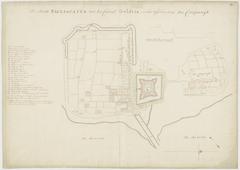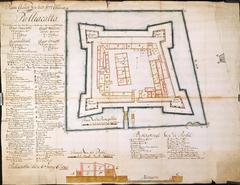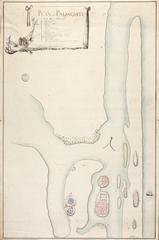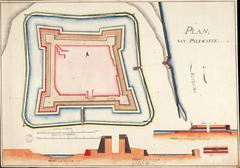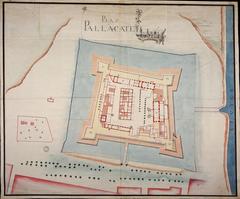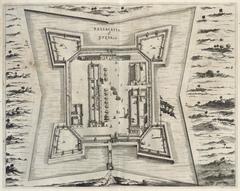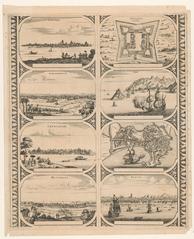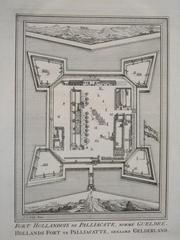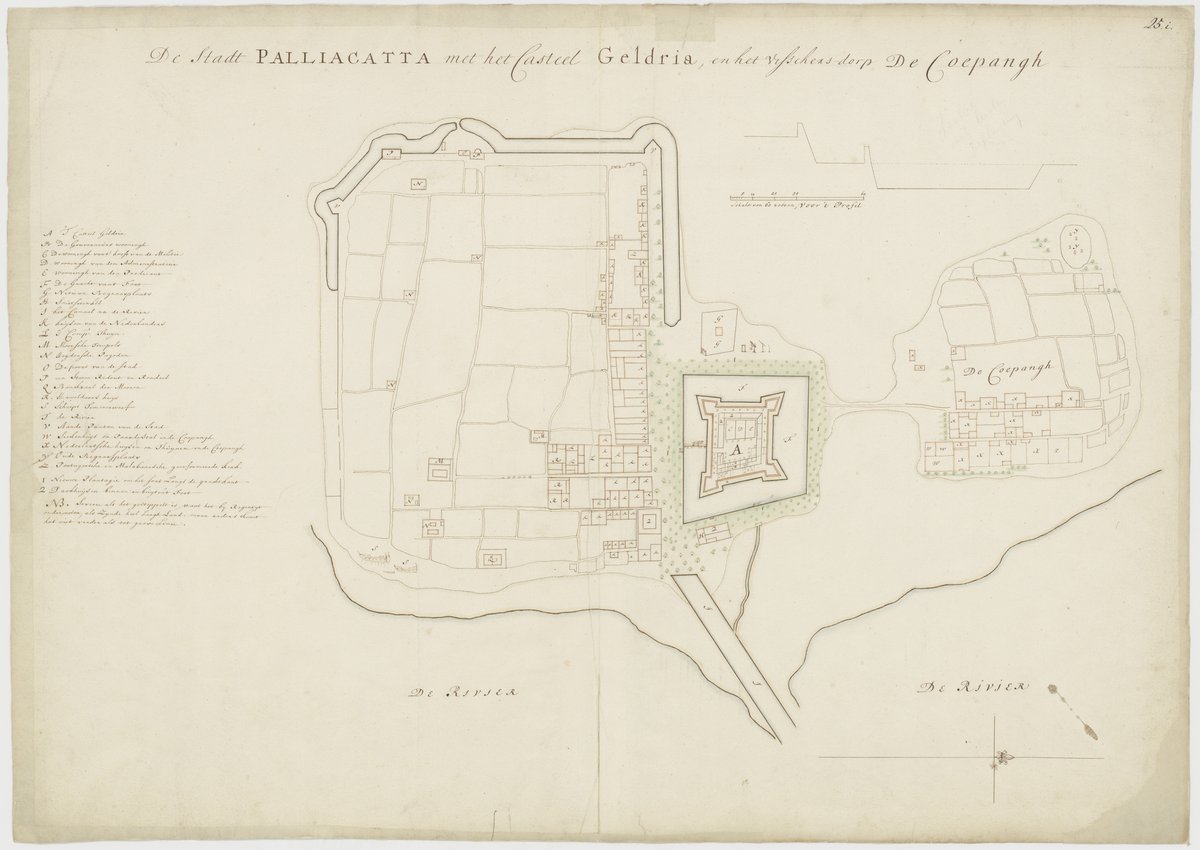
New Dutch Cemetery Visiting Hours, Tickets, and History in Ponneri, India
Date: 22/07/2024
Introduction
The New Dutch Cemetery in Ponneri, India, is a historically and culturally significant site that offers a unique window into the Dutch colonial era. Established in the 17th century by the Dutch East India Company (VOC), the cemetery serves as the final resting place for Dutch nationals who lived and worked in the region. The cemetery’s rich history, unique architectural features, and cultural significance make it a must-visit for history enthusiasts and tourists alike.
Located in Ponneri, a town in the Tiruvallur district of Tamil Nadu, India, approximately 40 kilometers north of Chennai, the site is accessible by road and rail, making it convenient for visitors from Chennai and other nearby areas. The tombstones and mausoleums are adorned with intricate carvings and inscriptions in Dutch, Latin, and occasionally Tamil, providing valuable insights into the lives of the individuals buried there. Notable burials include prominent figures such as Hendrik Adriaan van Rheede tot Drakenstein, a famous Dutch botanist, and Pieter van Dam, a high-ranking official of the VOC.
Efforts to preserve and maintain the cemetery have been undertaken by various organizations, including heritage conservation groups and local authorities. These initiatives are crucial for protecting the site from deterioration and ensuring that future generations can appreciate its historical and cultural value.
For visitors, the New Dutch Cemetery offers a unique and educational experience. The site is open to the public with specific visiting hours, and guided tours are available for those who wish to gain a deeper understanding of the cemetery’s history and significance. In addition to exploring the cemetery, visitors can also explore other nearby attractions such as Pulicat Lake and the Dutch trading post in Pulicat, further enriching their visit.
Overall, the New Dutch Cemetery in Ponneri is a remarkable historical site that provides a fascinating glimpse into the Dutch colonial era in India. Its rich history, architectural beauty, and cultural significance make it a valuable heritage site that deserves preservation and appreciation.
Table of Contents
- [Introduction](#introductionintroduction)
- [History of the New Dutch Cemetery](#history-of-the-new-dutch-cemeteryhistory-of-the-new-dutch-cemetery)
- [Origins and Establishment](#origins-and-establishmentorigins-and-establishment)
- [Architectural Features](#architectural-featuresarchitectural-features)
- [Historical Significance](#historical-significancehistorical-significance)
- [Preservation and Conservation Efforts](#preservation-and-conservation-effortspreservation-and-conservation-efforts)
- [Restoration Projects](#restoration-projectsrestoration-projects)
- [Community Involvement](#community-involvementcommunity-involvement)
- [Funding and Support](#funding-and-supportfunding-and-support)
- [Challenges and Solutions](#challenges-and-solutionschallenges-and-solutions)
- [Notable Burials](#notable-burialsnotable-burials)
- [Visitor Information](#visitor-informationvisitor-information)
- [Visiting Hours and Tickets](#visiting-hours-and-ticketsvisiting-hours-and-tickets)
- [Accessibility and Travel Tips](#accessibility-and-travel-tipsaccessibility-and-travel-tips)
- [What to Wear](#what-to-wearwhat-to-wear)
- [Photography](#photographyphotography)
- [Safety Tips](#safety-tipssafety-tips)
- [Nearby Attractions](#nearby-attractionsnearby-attractions)
- [Pulicat Lake](#pulicat-lakepulicat-lake)
- [Dutch Fort](#dutch-fortdutch-fort)
- [Cholamandal Artists’ Village](#cholamandal-artists-villagecholamandal-artists-village)
- [Local Cuisine](#local-cuisinelocal-cuisine)
- [Idli and Dosa](#idli-and-dosaidli-and-dosa)
- [Chettinad Chicken](#chettinad-chickenchettinad-chicken)
- [Filter Coffee](#filter-coffeefilter-coffee)
- [Cultural Etiquette](#cultural-etiquettecultural-etiquette)
- [Souvenirs and Shopping](#souvenirs-and-shoppingsouvenirs-and-shopping)
- [FAQ](#faqfaq)
- [Conclusion](#conclusionconclusion)
- [References](#referencesreferences)
History of the New Dutch Cemetery
Origins and Establishment
The New Dutch Cemetery was established in the 17th century during the period when the Dutch East India Company (VOC) was actively involved in trade and colonial activities in India. This cemetery was primarily used for the burial of Dutch nationals who lived and worked in the region. The establishment of the cemetery is closely linked to the Dutch trading post in Pulicat, a bustling port town near Ponneri.
Architectural Features
The cemetery is notable for its unique architectural features that reflect the Dutch colonial style. The tombstones and mausoleums are adorned with intricate carvings and inscriptions in Dutch, Latin, and occasionally Tamil. These inscriptions provide valuable insights into the lives of the individuals buried there.
Historical Significance
The cemetery holds immense historical significance as it offers a glimpse into the Dutch colonial era in India. It serves as a reminder of the competition between European powers for control over trade routes and territories in the Indian Ocean.
Preservation and Conservation Efforts
Restoration Projects
Several restoration projects have been undertaken to preserve the New Dutch Cemetery. These projects often involve collaboration between local authorities, heritage organizations, and international partners. Restoration efforts focus on repairing damaged tombstones, cleaning the site, and preventing further deterioration. These projects are essential in maintaining the structural integrity and historical value of the cemetery.
Community Involvement
Local communities play a crucial role in the preservation of the New Dutch Cemetery. Community involvement includes raising awareness about the site’s significance, participating in clean-up drives, and supporting conservation initiatives. Engaging the local community ensures that the cemetery is protected and valued as a part of the region’s heritage.
Funding and Support
Preservation efforts for the New Dutch Cemetery often rely on funding and support from various sources. This includes government grants, donations from heritage organizations, and contributions from private individuals. Securing adequate funding is essential for the ongoing maintenance and conservation of the site. Support from international heritage organizations also helps in bringing expertise and resources to the preservation efforts.
Challenges and Solutions
Preserving the New Dutch Cemetery comes with several challenges, including environmental factors, vandalism, and limited resources. Addressing these challenges requires a multifaceted approach that includes regular maintenance, security measures, and community engagement. Innovative solutions, such as using modern technology for restoration and documentation, can also aid in overcoming these challenges.
Notable Burials
The cemetery is the final resting place of several notable individuals, including Hendrik Adriaan van Rheede tot Drakenstein, a prominent Dutch botanist, and Pieter van Dam, a high-ranking official of the VOC.
Visitor Information
Visiting Hours and Tickets
Visitors can explore the New Dutch Cemetery during the following hours:
- Monday to Friday: 9:00 AM - 5:00 PM
- Saturday and Sunday: 10:00 AM - 6:00 PM
Ticket Prices:
- Adults: INR 50
- Children (under 12): INR 25
Accessibility and Travel Tips
The cemetery is located in Ponneri, a town in the Tiruvallur district of Tamil Nadu, India. It is accessible by road, and visitors can reach Ponneri via Chennai, which is approximately 40 kilometers away. The nearest railway station is Ponneri Railway Station. Visitors are advised to respect the site’s historical significance and follow any guidelines set by local authorities and conservation groups.
What to Wear
Given the historical and somewhat solemn nature of the site, it is recommended to dress modestly. Lightweight, breathable clothing is ideal due to the warm climate. Comfortable walking shoes are a must, as the terrain can be uneven. Don’t forget to bring a hat, sunglasses, and sunscreen to protect yourself from the sun.
Photography
Photography is generally allowed, but it is always respectful to ask for permission if there are any caretakers or local visitors present. The cemetery offers numerous opportunities for capturing historical architecture and serene landscapes. Ensure your camera or smartphone is fully charged, and consider bringing a portable charger.
Safety Tips
- Hydration: Carry a water bottle to stay hydrated, especially if you are visiting during the warmer months.
- Insect Repellent: Apply insect repellent to protect yourself from mosquitoes and other insects.
- Personal Belongings: Keep your personal belongings secure. While the area is generally safe, it is always wise to be cautious.
- Emergency Contacts: Have local emergency contact numbers handy. The nearest hospital is Ponneri Government Hospital, located about 3 kilometers from the cemetery.
Nearby Attractions
Pulicat Lake
Located about 20 kilometers from Ponneri, Pulicat Lake is the second-largest brackish water lake in India. It is a haven for bird watchers, especially during the migratory season.
Dutch Fort
Situated in Sadras, approximately 60 kilometers from Ponneri, this fort offers a glimpse into the Dutch colonial history of the region.
Cholamandal Artists’ Village
Located in Chennai, this artists’ commune is about an hour’s drive from Ponneri and offers a unique cultural experience.
Local Cuisine
Idli and Dosa
Traditional South Indian breakfast items served with chutney and sambar.
Chettinad Chicken
A spicy chicken curry that is a specialty of the region.
Filter Coffee
South Indian filter coffee is a must-try for coffee enthusiasts.
Cultural Etiquette
When visiting the New Dutch Cemetery, it is important to be respectful of the site and its historical significance. Here are some cultural etiquette tips:
- Quiet Reflection: Maintain a quiet demeanor to respect the solemnity of the cemetery.
- No Littering: Ensure you do not leave any litter behind. Use designated trash bins if available.
- Respect Local Customs: Be mindful of local customs and traditions. If you are unsure about something, it is always best to ask a local or your guide.
Souvenirs and Shopping
While Ponneri itself may not have many souvenir shops, you can find a variety of local handicrafts and souvenirs in Chennai. Popular items include traditional Tamil Nadu silk sarees, handcrafted jewelry, and local spices. The Government Museum Complex in Chennai also has a souvenir shop that offers a range of cultural artifacts.
FAQ
Q: What are the visiting hours for the New Dutch Cemetery? A: The cemetery is open Monday to Friday from 9:00 AM to 5:00 PM, and Saturday and Sunday from 10:00 AM to 6:00 PM.
Q: How do I get tickets to the New Dutch Cemetery? A: Tickets can be purchased at the entrance. Prices are INR 50 for adults and INR 25 for children under 12.
Q: Are there guided tours available? A: Yes, guided tours can be arranged through local tour operators or the Tamil Nadu Tourism Development Corporation (TTDC).
Q: Is there an entry fee for the New Dutch Cemetery? A: No, there is no entry fee.
Q: Are there any special events held at the cemetery? A: Occasionally, the cemetery hosts special events, including heritage walks and educational tours. Check with local tourism offices for upcoming events.
Conclusion
The New Dutch Cemetery in Ponneri is a remarkable testament to the Dutch colonial presence in India and serves as a valuable heritage site that offers deep historical and cultural insights. From its establishment in the 17th century by the Dutch East India Company to its well-preserved tombstones and mausoleums adorned with intricate carvings, the cemetery stands as a symbol of the Dutch influence in the region. Notable burials of prominent figures such as Hendrik Adriaan van Rheede tot Drakenstein and Pieter van Dam further underscore its historical significance.
Efforts to preserve and maintain the cemetery, spearheaded by heritage conservation groups and local authorities, are crucial for safeguarding this cultural treasure. Visitors to the cemetery can explore its rich history, unique architectural features, and cultural significance through guided tours and informative plaques. The cemetery’s accessibility and proximity to other historical sites like Pulicat Lake and the Dutch trading post in Pulicat make it a compelling destination for history enthusiasts and tourists.
For those planning a visit, it is essential to respect the site’s historical significance by adhering to guidelines and maintaining a respectful demeanor. The cemetery is open to the public with specific visiting hours, and tickets can be purchased at the entrance. Nearby attractions, local cuisine, and cultural etiquette further enrich the visitor experience, offering a comprehensive and memorable journey through the Dutch colonial past in India.
In conclusion, the New Dutch Cemetery in Ponneri is a must-visit for anyone interested in exploring the lesser-known aspects of India’s colonial history. Its historical, architectural, and cultural value make it a site worthy of preservation and appreciation, providing a unique window into the Dutch colonial era. Visitors are encouraged to explore this remarkable site and gain a deeper understanding of the Dutch presence in India and the broader context of European colonialism in the region.
